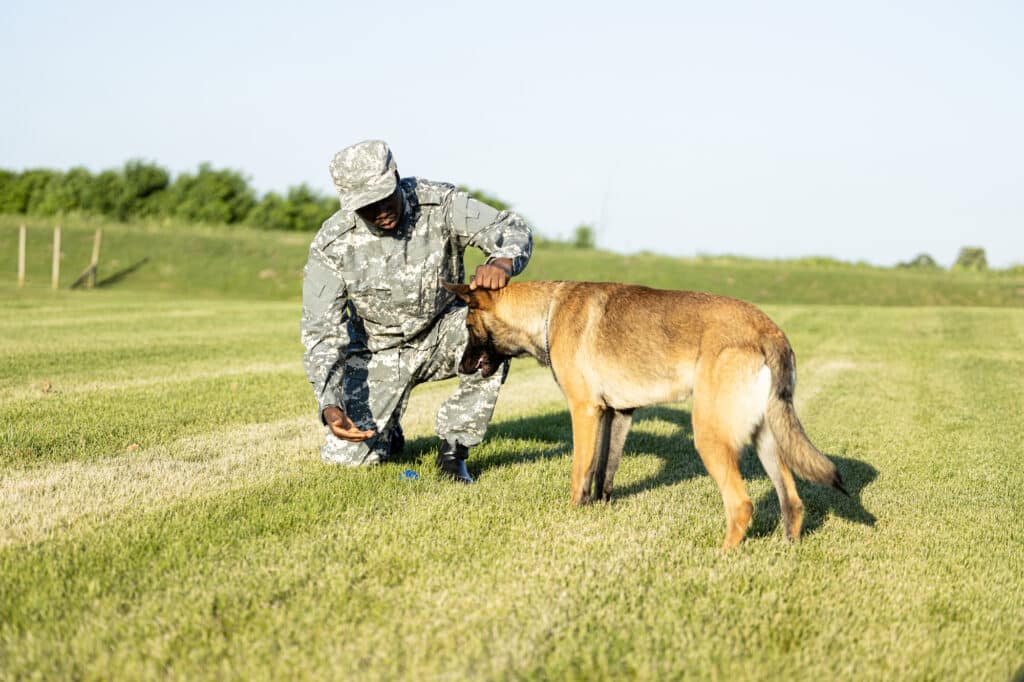
Post Traumatic Stress Disorder (PTSD) is a mental health condition that affects millions of people worldwide. It can be caused by underwent or seen a traumatic event such as car accidents, military combat, natural disasters, and sexual assault. The symptoms of PTSD can be weakening, including anxiety, depression, panic attacks, nightmares, and hypervigilance.
Service dogs have been proven to be highly beneficial in helping individuals with PTSD navigate their daily lives and manage their symptoms. These specially trained dogs can provide comfort, support, and assistance, making it easier for individuals with PTSD to cope with their condition. While many people opt to obtain a professionally trained PTSD service dog, it is possible to train your own service dog with the right guidance and resources.
Requirements for a Service Dog
Before delving into the training process, it is crucial to understand the legal requirements for a service dog. In many countries, including the United States, service dogs are protected by specific laws such as the Americans with Disabilities Act (ADA). According to the ADA, a service dog is defined as a dog that’s individually trained to perform tasks or work specifically for a person with a disability.
To qualify for a service dog, an individual must have a disability recognized by the ADA. This can include physical disabilities, sensory impairments, or mental health conditions such as PTSD. Additionally, the individual must be able to demonstrate that the service dog’s specific tasks are directly related to their disability and help mitigate its effects.
Choosing the Right Dog
When selecting a dog for PTSD service dog training, several factors should be considered. Temperament, intelligence, energy level, and size are all important aspects to evaluate.
Temperament
The dog should have a calm, stable, friendly, and adaptable temperament. They should be able to remain calm in stressful situations and be comfortable being around strangers and in public spaces.
Intelligence
A service dog needs to be intelligent and eager to learn. They should be capable of understanding and performing complex tasks accurately.
Energy Level
The dog’s energy level should match the handler’s needs. PTSD service dogs are typically highly active, providing a grounding presence. However, overly hyper or excessively timid dogs may not be suitable for this purpose.
Size
While there is no size requirement for a PTSD service dog, it is essential to consider the individual handler’s physical abilities and limitations. A larger dog may provide better balance and assistance, but a smaller dog is often more practical for certain individuals and living situations.
Training Process
Training a PTSD service dog requires time, patience, consistency, and dedication. It’s advisable to seek guidance from experienced professionals or organizations like All Stage Canine Development that specialize in service dog training. Here are the key steps involved in training your own PTSD service dog:
1. Basic Obedience Training
Start by teaching your dog basic commands such as sit, stay, lay down, come, and heel. These commands are essential for maintaining control over the dog in various situations, ensuring their behavior is appropriate and reliable.
2. Public Access Training
The dog must be well-behaved and obedient in public spaces. Take your dog to different environments, gradually exposing them to various stimuli such as crowds, noises, and distractions. Teach them to remain focused on their handler and follow commands even in challenging situations.
3. Task Training
Teach your dog specific tasks that help mitigate your symptoms of PTSD. These tasks can be tailored to your individual needs and may include providing deep pressure therapy during anxiety attacks, interrupting panic attacks, alerting to triggers, creating personal space in crowded areas, turning on lights, or retrieving medication. Keep in mind that it is crucial to consult with a professional to ensure these tasks are safe and effective.
4. Socialization
Expose your dog to various people, animals, and environments to ensure they are comfortable and well-behaved in different situations. This will also help prevent fear or aggression issues.
5. Reinforcement and Maintenance
Consistently reinforce the dog’s training through positive reinforcement techniques such as treats, praise, and affection. Regularly practice commands and tasks to maintain their proficiency.
Challenges and Considerations
Training your own PTSD service dog can be a challenging journey, requiring time, effort, and the willingness to overcome obstacles. It is essential to have realistic expectations and be prepared to face setbacks along the way.
One of the main challenges is ensuring that your dog is consistently well-behaved, obedient, and able to perform their tasks reliably. This requires ongoing training, reinforcement, and practice. It may also be necessary to seek professional guidance or attend training classes to address any behavioral issues that may arise.
Additionally, it is important to understand that not all dogs are suitable for becoming PTSD service dogs. Some dogs may lack the temperament, intelligence, or physical capability needed for this type of work. Recognizing and accepting these limitations is vital to ensure both the dog’s well-being and the handler’s safety.
Final Thoughts
Training your own PTSD service dog can be a rewarding and life-changing experience for both you and your canine companion. It offers an opportunity to bond with your dog and tailor their training to suit your individual needs. However, it is crucial to remember that this process requires dedication, time, and patience.
Consider seeking professional guidance and support from experienced trainers or organizations specializing in service dog training. They can provide invaluable advice and resources to help you successfully train a PTSD service dog. Remember to consult local laws and regulations regarding service dogs to ensure compliance and enjoy the benefits of having a trained service dog.



